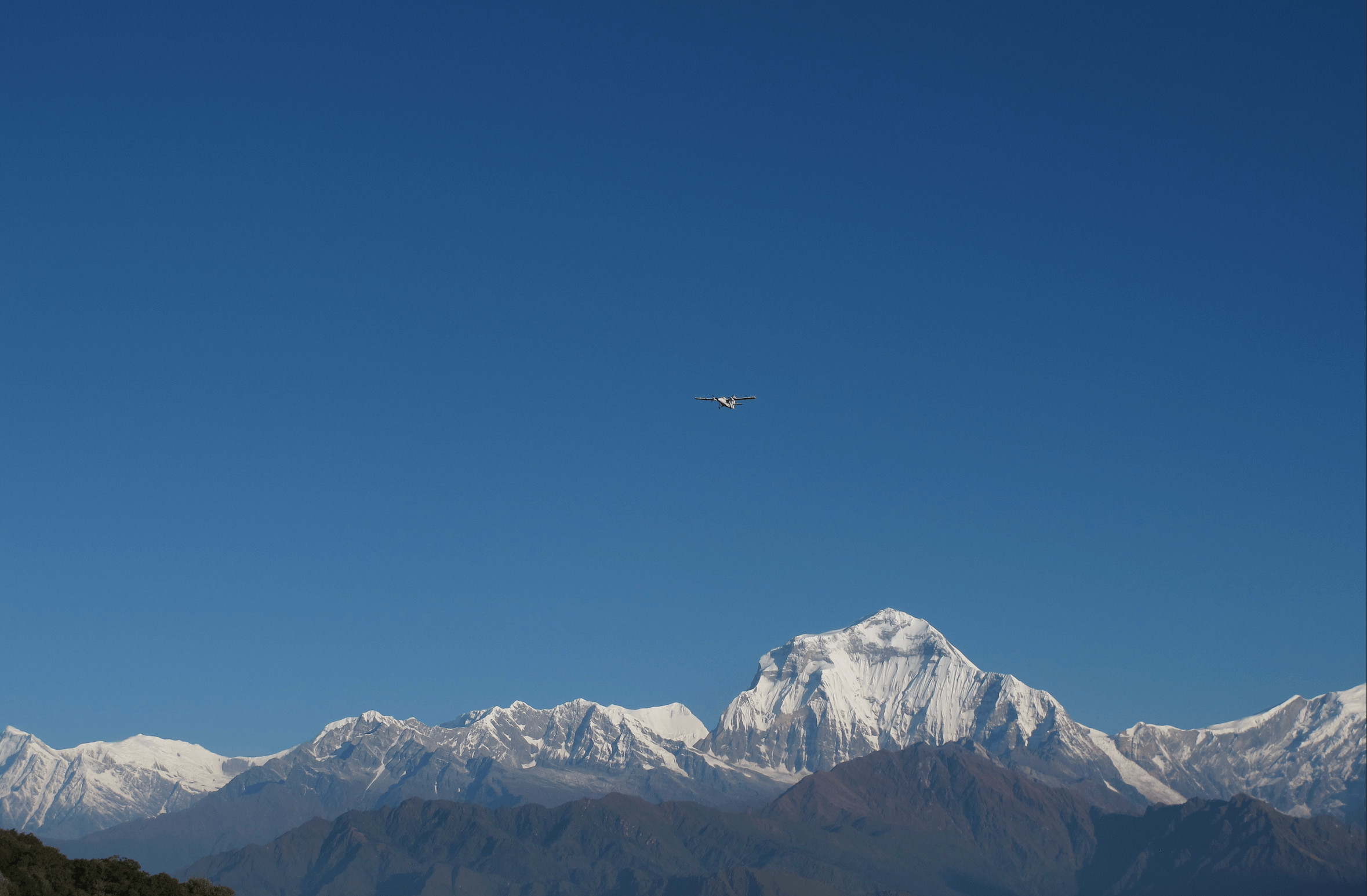Pokhara-Jomsom flight with 22 missing
A Tara Air DHC-6 aircraft with 22 people on board is missing while on an early Sunday morning flight between Pokhara and Jomsom in poor weather.
The Twin Otter aircraft lost contact with Jomsom air traffic control at 4:21 UTC after reporting Ghorepani. Rescue helicopters from the Nepali Army and Fish Tail Air have turned back because of bad visibility in the mountains where the plane last made contact along the rugged Kali Gandaki Valley between Annapurna and Dhaulagiri massifs.


Among the passengers were 13 Nepalis, including the crew, 4 Indian nationals and two Germans, according to the carrier which is a subsidiary of Yeti Airlines. Nepal has been hit by pre-monsoon rains and the en route weather on Sunday morning was said to be particularly bad.
The Canadian-short takeoff and landing aircraft with call sign 9N-AET was built 43 years old and had been in service with Tara Air since 1998. The plane has a seating capacity of 20 and was fully-loaded.
Even by Nepal’s standards of air safety, the Pokhara-Jomsom route is regarded as being one of the most accident-prone even in good weather. The route takes planes from Pokhara, past Ghorepani Pass after which pilots have to make a sharp turn north into the Kali Gandaki Valley.

Jomsom lies on the arid north side of the Himalaya, and has operations only in the mornings because of high winds and cloud build up during the course of the day. And Jomsom airport is the gateway for tourists visiting Nepal's Mustang District, and also for Hindu and Buddhist pilgrims going to the sacred shrine at Muktinath.
The route has seen many fatal accidents in recent decades, most of them involving Twin Otters, and nearly all due to controlled flight into terrain (CFIT) during bad weather. In fact 90% of accidents in Nepal since 1960 have been due to disoriented pilots hitting mountains hidden by clouds.
The previous almost identical accident on this route, also Tara Air, was of a brand new Viking Twin Otter near Dana in 2016 in which 23 people were killed. In 2012 an Agni Air Dornier 228 crashed while landing at Jomsom, killing 15 of the 22 on board.
In 1997 a Civil Aviation Authority of Nepal (CAAN) Twin Otter chartered by Lumbini Air crashed on a flight from Jomsom to Pokhara in, killing all 19 on board. In 2002 a Shangrila Air Twin Otter from Jomsom crashed just south of Pokhara killing 17 passengers and crew. In 2013 a Nepal Airlines Twin Otter had a runway excursion while landing in Jomsom, but there were no fatalities.

Tara Air serves Nepal’s remote airports, and has had a disproportionate share of crashes because of the difficult terrain it operates in. A Yeti Airlines (now Tara Air) Twin Otter slammed into a cliff below Lukla in 2008 while attempting to land in bad weather, only 1 of the 19 people on board survived. Another Tara Air Twin Otter hit a mountain in 2010 in Ramechhap, killing all 22 passengers and crew.
Nepal’s air safety record has been improving in recent years, but the crash on Sunday will once more highlight the dangers of domestic aviation in Nepal. CAAN has been lobbying to have Nepal lifted from the European Union (EU) safety list that bans Nepali carriers.




